Science & Skepticism, Surf Coaching, Surfboards, technologyHow a Surfboard Works
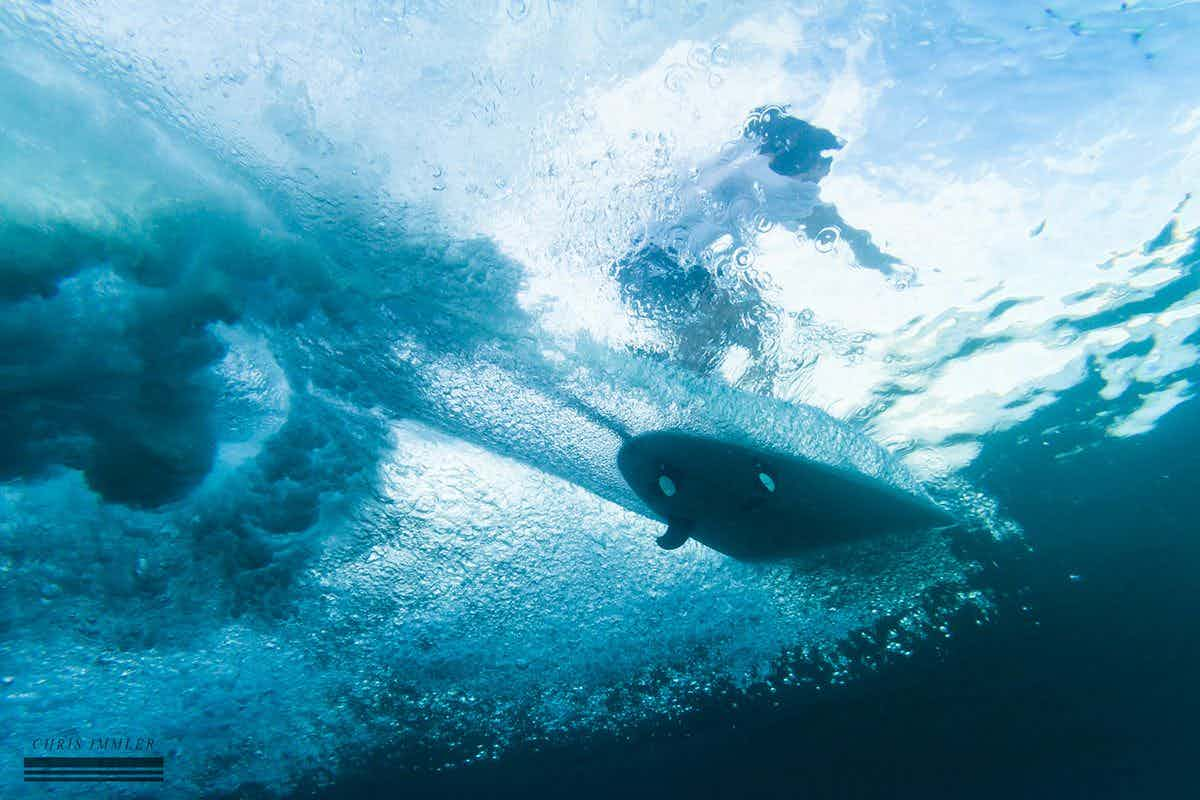
The Physics of Surfing:
How does your surfboard actually work? Most surfers simply accept the fact that we paddle into a wave, stand up and ride it, without every really questioning what’s making this happen, or what’s going on beneath our feet. Perhaps when we’re shopping for a new surfboard we might think about the effects of variables such as length, width, volume, bottom contours or tail-shape, but for the most part, the majority of us are blissfully ignorant.
Even a lot of surfboard shapers – although they’d never admit it – aren’t that wise as to the physics at play when the surfboards they’ve shaped are being ridden; they know what works and that’s what they continue making. A big reason for this is the lack of proper research that has been done on surfboards. A lot of what we “know” about surfboards has been worked out through trial and error, and while a few people have hypothesized the science behind why a board performs the way it does, there is little hard evidence to support these claims.
We’re going to try to address some of the core mechanics here and now, and then build on them in future articles that will refer back to the points and principles covered here.
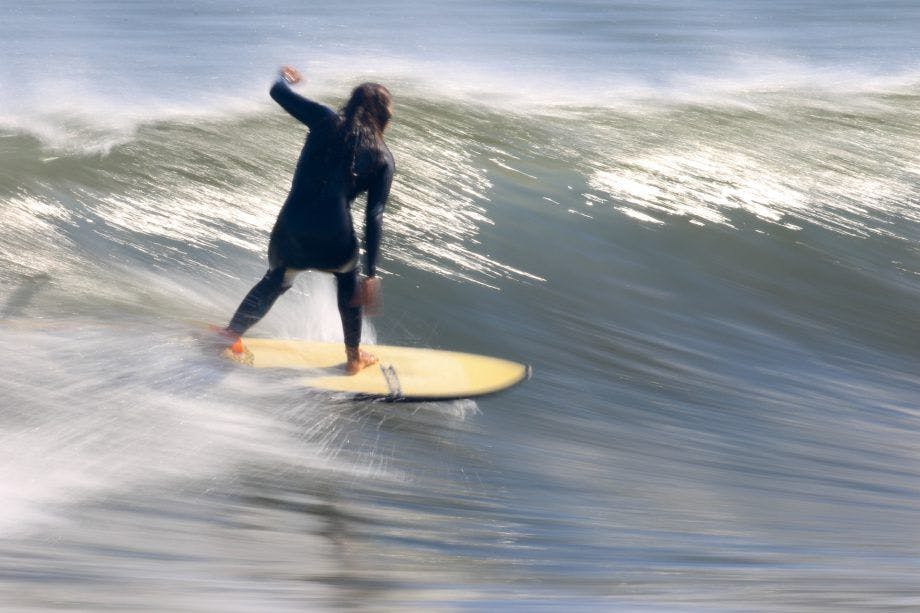
Let’s start with; speed. It’s what we’re really after when we’re riding a wave, not just because it gives us a thrill, but also because it’s the raw material for producing good maneuvers. Where does that speed come from and how do we generate more? If you answered Gravity, then you’re partly correct; when you paddle into a wave and drop down the face of it, it is gravity that’s pulling you down and causing you to accelerate, and even when you angle across the wave, gravity is still helping to generate some of your speed. However, if gravity was the sole factor in generating speed, you should go fastest when going straight into the beach, but that’s not the case. Your board actually travels far faster when travelling in trim across the face of a wave, and this is all to do with how the flow of water on the wave face interacts with your surfboard.
The very first thing that we need to get clear here, is that when we look at an unbroken wave, it is mostly wave energy that’s moving, not the water. If you placed a rubber duck on the surface of the ocean and watched a wave pass, the rubber duck would just rise and fall as the wave passed underneath; it wouldn’t be picked up and carried by the wave. A good way to think of it is to imagine a blue tarpaulin, and then roll a bowling ball underneath it – you would see the “wave” of the bowling ball moving under the tarp but the actual tarp itself remains in the same place. However, if we were to follow the bowling ball with a camera, we would see the canvas rushing past, and the same is true if you travel with a wave in the ocean. This creates what we call an “Effective Flow” of water running up the face from the perspective of the surfer.
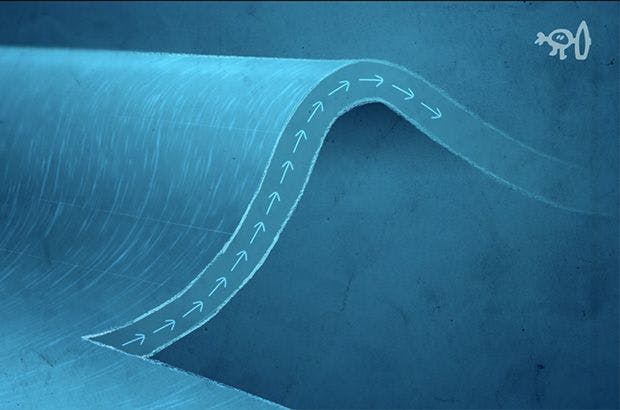
When we take off on a wave and set our rail to start riding across the face, our surfboard interrupts that apparent flow of water. Two things then happen: Our surfboard grips the face of the wave, and the surfboard generates Lift and forward Thrust. Depending on exactly how the board interacts with the water flow, the amount of lift, thrust and grip can be varied to suit the maneuvers we’re trying to do on the wave.
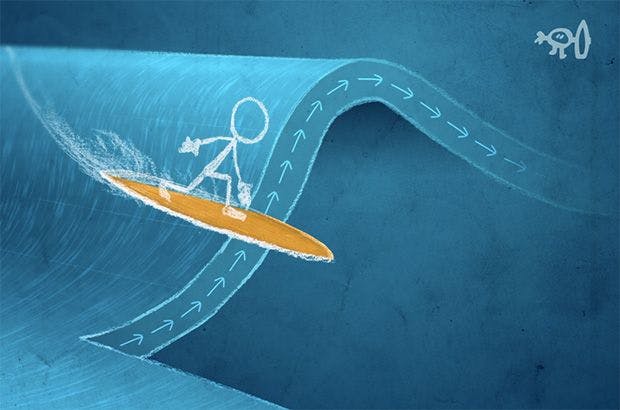
How Your Surfboard Grips the Wave

A surfboard can grip the wave because when some of the water moving up the wave face hits the bottom of the surfboard it flows around the soft, inside rail of the board. In the vast majority of cases, this is what holds your board into the wave, not your fins as most people think (more on that another time). As far as physics is concerned, water is actually very sticky, so when it flows along a surface it will follow the curves, and this attraction is what gives the board grip. A great example of this is to hold a spoon under a running faucet – if you hold it upside down the water flows along the curved surface and actually sucks the spoon into the waterflow. Here’s an even better demonstration using a ping-pong ball, and just imagine if this was the rail of your board sitting in the wave.
(Side note: Although this video is titled “Bernoulli’s Principle” there is some debate as to whether Bernoulli’s Principle, Coanda’s Effect, or just the Surface Tension of the water is the main force at work here)
This “holding power” and the point at which water releases from a curved surface rather than gripping, can be predicted by a calculation called the Reynolds Number, a dimensionless quantity that is used to predict flow patterns in fluid mechanics. In the case of a rounded object in water (i.e. the rail of a surfboard), the speed of the water and the radius of the curve can be used to calculate the point at which the flow of water will release from the curve, with faster flow and tighter radius’ causing earlier release. This means that thicker, softer rails, riding on smaller, slower waves will have much more hold in the wave face than a thin rail at high speeds.
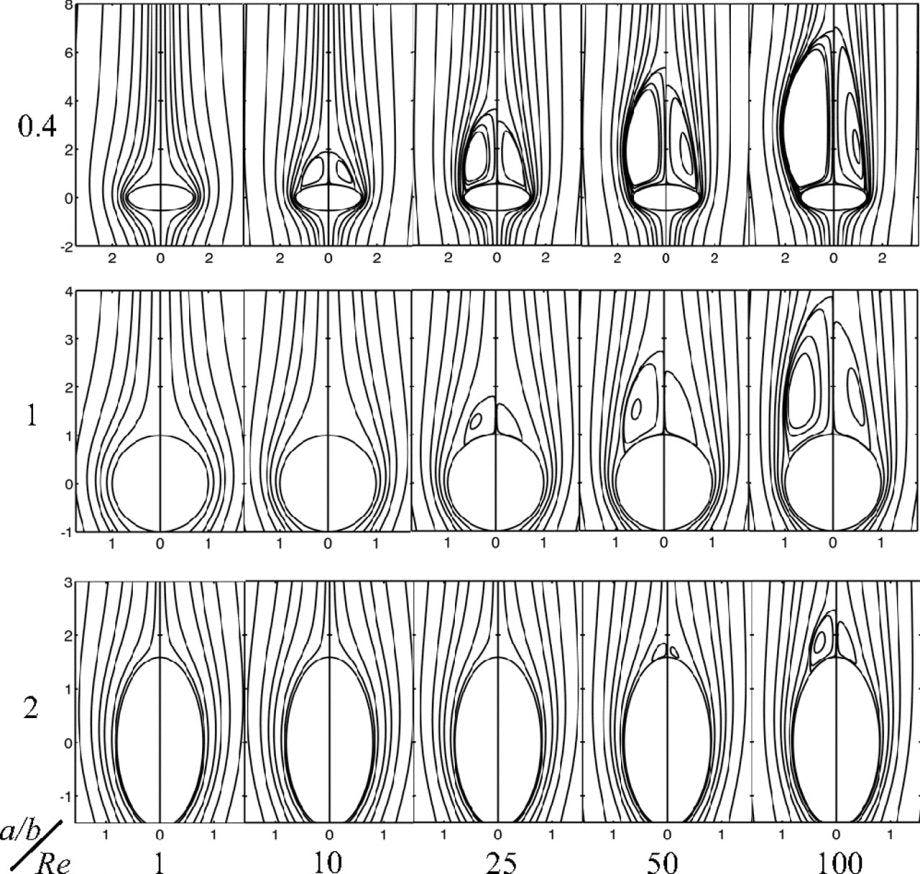
How Your Surfboard Generates Speed (Forward Thrust)
Now, while some of the water that flows up the wave, wraps around the inside rail and holds the board in the wave face, the rest, the majority of it in fact, hits the bottom of your surfboard, and is directed along the length of your surfboard to exit out through the tail. Newton’s 3rd Law of Motion dictates (more or less) that “every action has an equal and opposite reaction”, so when we re-direct that Effective Flow, your surfboard is acting as a hydrodynamic foil to create lift and forwards thrust. For every litre of water we can re-direct, we’ll get around 2lbs of lift and thrust, causing you to travel faster across the face of the wave.
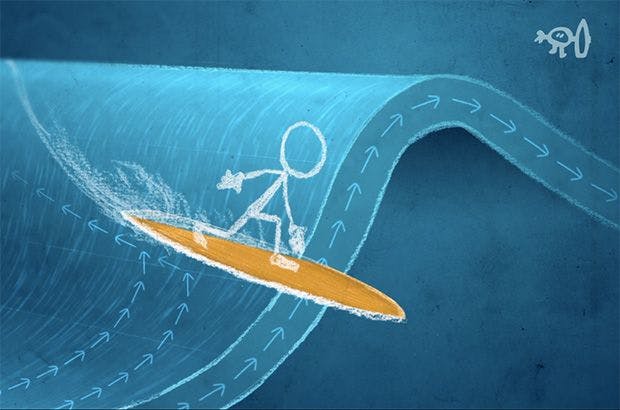
Concave or channeled bottom contours are designed to redirect as much water as possible along the board and out past the fins, whilst convex bottoms shed water out towards the rails so are slower down the line, but facilitate easier turning as they transition from rail to rail more readily.
The importance to generating speed of redirecting as much flow as possible along the length of your surfboard (rather than shedding it off your rails) is why locking in your inside rail and taking a high line is such an important habit to form.
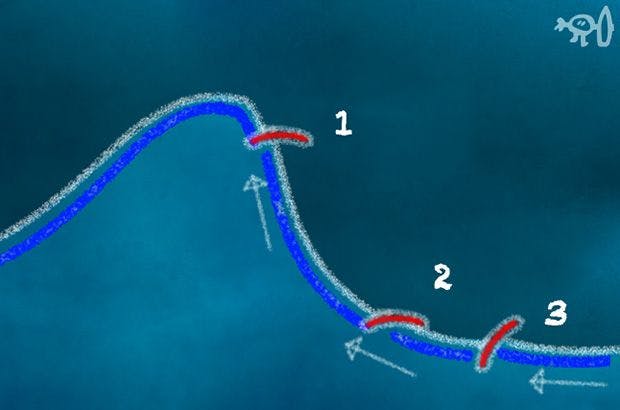
The illustration above shows a cross section of a wave with surfboards in three possible scenarios. The first surfboard is in trim on a highline across the wave, and is creating as much lift and thrust as possible because the bottom of the board is perpendicular to the flow of water up the face of the wave. Most of the water making contact with the underside of the board is being redirected out through the tail. The second surfboard, trimming along at the bottom of the wave (the “safe zone” where many beginner and intermediate surfers find themselves) is actually in the worst place for generating speed; because it puts the rail of the board at a shallow angle relative to the flow of water, so much of that flow will run across the bottom of the board and spill off the inside rail. The third surfboard is also at the bottom of the wave, but by banking over into a big bottom turn, the flow of water is hitting the bottom of the board at 90 degrees. This surfboard will actually be going the fastest, as it was able to generate speed using Gravity when it dropped down the face of the wave, and is now continuing to generate speed (not lose it!) as it turns. That means that it’s possible to come out of a bottom turn with more speed than you took into it, and actually go back up the wave face faster than you went down it.
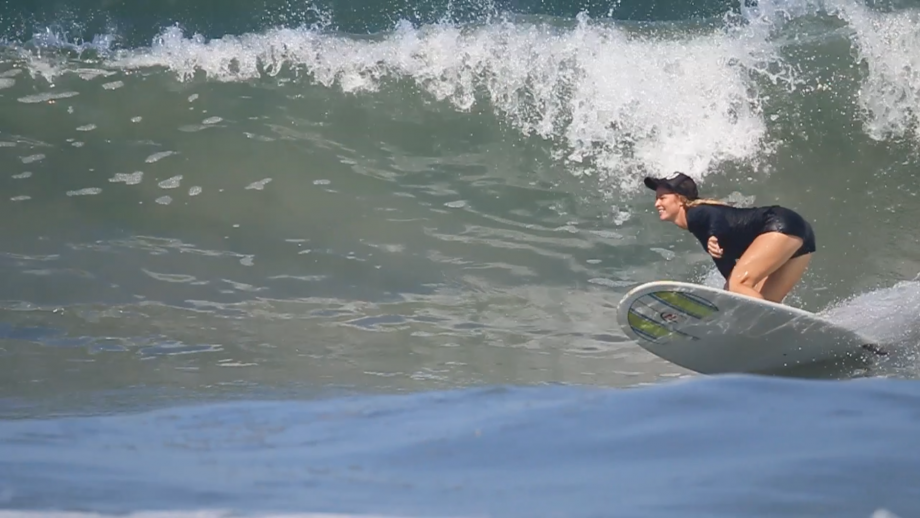
For this reason, the most efficient way to surf a wave is with a gentle “roller coaster” ride up and down the face. However in order to make this work, you must master the timing and technique of the bottom turn. The next best route is to angle your take-off and take a high line along the wave. This is easier to learn, and will give an intermediate surfer more time on the open face of the wave to practice their turns. The low route, whilst appealing during the early days of your surfing journey, is going to slow you down, both on that wave itself and in terms of your overall progression as a surfer.
Check the speed readout during this ride above, and notice how the speed increases as I hold my high line, but peaks through the 2 bottom turn as I set up my turns.